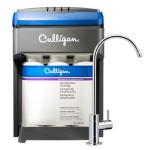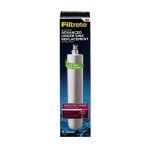Addressing Rocks in the Bathroom Sink: A Comprehensive Guide to Causes, Prevention, and Resolution
The discovery of rocks in a bathroom sink is an unusual occurrence that can signal various underlying issues within a plumbing system or the surrounding environment. Understanding the possible causes of this phenomenon is crucial for effective diagnosis and resolution. This article aims to provide a detailed exploration of the factors that may contribute to rocks appearing in a bathroom sink, along with strategies for preventing future occurrences and addressing existing problems.
Possible Sources and Entry Points of Rocks
Several potential sources could contribute to the presence of rocks in a bathroom sink. The most common explanations relate to the water supply, the plumbing system itself, and, in some cases, human intervention.
Well Water Systems: Homes that rely on well water as their primary water source are more susceptible to this issue. Well water, unlike treated municipal water, often contains sediment, minerals, and small rock particles. Over time, these particles can accumulate within the well itself and be drawn into the plumbing system during water usage. The size and type of rocks found will vary depending on the geological composition of the surrounding soil and bedrock.
Aging or Damaged Plumbing: Deterioration of plumbing materials, particularly in older homes, can lead to the introduction of foreign objects, including rocks. Corroded pipes, especially those made of galvanized steel, can flake off internally, releasing rust and mineral deposits that may resemble small rocks. Furthermore, cracks or leaks in underground pipes can allow external materials, such as soil, sand, and small rocks, to enter the water supply. These materials are then carried through the plumbing system and eventually deposited in fixtures like bathroom sinks.
Construction or Repair Work: Recent plumbing repairs or construction activities in the vicinity can disrupt the water supply and introduce debris into the system. Activities such as pipe replacement, road work, or even nearby construction can loosen sediment and rocks in the ground, which may then be drawn into the water lines. It is common for these larger particles to eventually find their way to faucets and aerators.
Deliberate Placement: While less frequent, the possibility of deliberate placement of rocks in the sink cannot be ruled out. This explanation is more likely in situations involving children or instances of vandalism. Thorough investigation is necessary to determine if this is the source.
Contaminated Water Source: In rare instances, the public water supply could be contaminated with sediment. Natural disasters or failures in the water treatment process can introduce debris into the water system. Contacting the local water authority is essential in such cases to confirm water safety and address potentially widespread issues.
Potential Problems Caused by Rocks in the Plumbing System
The presence of rocks in the bathroom sink is not merely an aesthetic issue. It can signal underlying problems within the plumbing system and lead to a range of complications if left unaddressed.
Fixture Damage: Hard rock particles can scratch and damage the surfaces of sinks, faucets, and other plumbing fixtures. Over time, this can lead to unsightly wear and tear, reducing the lifespan and value of these components. Abrasive particles can also damage the internal mechanisms of faucets, leading to leaks and reduced water pressure.
Clogged Drains: Rocks can accumulate in drainpipes, leading to partial or complete clogs. This can result in slow drainage, standing water in the sink, and, eventually, a complete blockage that requires professional plumbing assistance. The accumulation of rocks also provides a surface for hair, soap scum, and other debris to cling to, further exacerbating the clogging problem.
Reduced Water Pressure: The presence of sediment and rocks in the pipes can restrict water flow, leading to reduced water pressure throughout the house. This is particularly noticeable in showers and other fixtures that require a strong, consistent water supply. Reduced water pressure can also affect the efficiency of appliances such as dishwashers and washing machines.
Appliance Damage: Rocks that enter the plumbing system can also damage water-using appliances, such as washing machines, dishwashers, and water heaters. These appliances have delicate internal components that can be damaged by abrasive particles. The buildup of sediment in water heaters can also reduce their efficiency and lifespan.
Health Concerns: While less likely in treated water systems, the presence of rocks, particularly in well water systems, can indicate the presence of other contaminants, such as bacteria and parasites. Regular water testing is crucial to ensure the safety of the water supply and to identify any potential health risks. It is also possible that rocks could leach certain minerals into the water, impacting water quality.
Strategies for Prevention and Resolution
Addressing the issue of rocks in the bathroom sink requires a multi-pronged approach that includes identifying the source of the rocks, implementing preventative measures, and taking corrective action to remove existing debris and repair any damage.
Water Filtration System: Installing a whole-house water filtration system is an effective way to remove sediment, minerals, and other contaminants from the water supply. This is particularly important for homes that rely on well water. The type of filter required will depend on the specific contaminants present in the water. Sediment filters are effective at removing particulate matter, while carbon filters can remove chlorine, odors, and other chemical contaminants. Consider professional water testing to determine the most appropriate filtration system for a specific situation.
Well Maintenance: For homes with well water systems, regular well maintenance is essential. This includes periodically inspecting the well for damage, cleaning the well, and disinfecting the water supply. A well pump can also draw excessive sediment into the water supply if it gets too close to the bottom of the well. Regular maintenance helps to prevent the accumulation of sediment and ensures the water supply remains clean and safe.
Plumbing Inspection and Repair: Regular plumbing inspections can help to identify and address potential problems before they lead to significant damage. Leaks, corroded pipes, and other issues can be repaired promptly to prevent the introduction of foreign materials into the water supply. Consider replacing old, galvanized steel pipes with more durable materials such as copper or PEX. A professional plumber can assess the condition of the existing plumbing system and recommend appropriate repairs or replacements.
Faucet Aerator Cleaning: Faucet aerators are designed to filter out sediment and debris from the water supply. Clean aerators regularly to prevent them from becoming clogged. This involves unscrewing the aerator from the faucet, disassembling it, and rinsing the components under running water to remove any accumulated sediment. In some cases, it may be necessary to soak the aerator components in vinegar or a descaling solution to remove stubborn mineral deposits.
Drain Cleaning: Regular drain cleaning can help to prevent the accumulation of rocks and other debris in the drainpipes. This can be done using a simple drain snake or a commercially available drain cleaner. However, it is important to use drain cleaners with caution, as some products can damage pipes. Avoid pouring large quantities of chemicals down the drain, as this can corrode the pipes over time. Hydro jetting is an effective method for clearing stubborn drain blockages, but it should be performed by a qualified plumber.
Water Heater Flush: Periodically flush the water heater to remove sediment and mineral deposits that accumulate at the bottom of the tank. This helps to improve the efficiency of the water heater and prevent damage to the heating element. Refer to the manufacturer's instructions for specific flushing procedures. Ignoring sediment buildup can lead to diminished hot water capacity and premature failure of the water heater.
Contacting a Professional: If the problem persists despite implementing these preventative measures, it is essential to contact a qualified plumber. A professional plumber can diagnose the underlying cause of the problem and recommend appropriate corrective action. This may involve repairing or replacing damaged pipes, installing a more sophisticated water filtration system, or performing other specialized services.
By understanding the potential causes and implementing appropriate preventative measures, homeowners can effectively address the issue of rocks in the bathroom sink and maintain a clean, efficient, and safe plumbing system.

Neat Way To Cover An Unsightly Drain Fill A Guest Sink Partially With Smooth Stones Large Enough Not Fall Into The And Message Rocks

59 Rock S N My Bathroom Sink Ideas

Lavatory Levity

How To Make A Stunning River Rock Bathroom Vanity Top

River Rocks In The Bathroom Sink Feng Shui Keeps Your Chi Energy From Going Down Drain

Rocks In The Sink Young And Classy

How To Make A Stunning River Rock Bathroom Vanity Top Hometalk

Modern Bathroom Design With Rocks Maison Valentina Blog

Design Tip Rocks In A Powder Room Sink Build Planners

Have A Question About Delta Portwood 4 In Centerset 2 Handle Bathroom Faucet Chrome Pg 1 The Home







